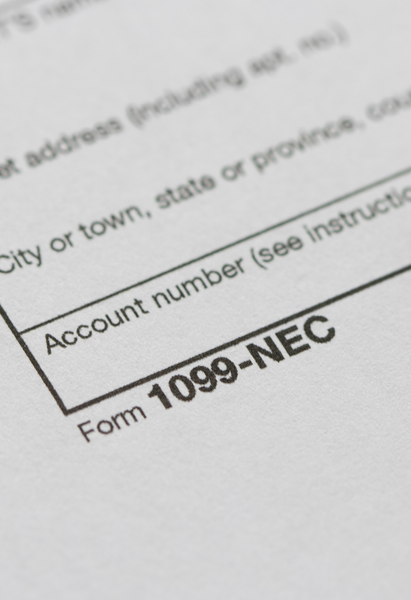[ad_1]
How we perform our daily tasks and interact with one another is constantly changing. Many entrepreneurs and companies have been able to capitalize on these technology-driven opportunities and have created a movement around sharing instead of owning. You may have heard people referring to this phenomenon as the gig economy, the on-demand economy, collaborative consumption, or, of course, the sharing economy.
Whether you realize it or not, you probably already participate in the sharing economy. Ridesharing services like Lyft, errand services like TaskRabbit, and crowdfunding platforms like Kickstarter all fall under the sharing economy.
Being an entrepreneur within this economy means you may have one or more micro-enterprises or small businesses going on. With April 15 approaching, here are some useful tax tips and tricks for all of the ride-sharers, home-renters, task-doers and more.
Report income from Forms 1099-NEC and 1099-K
By now you should have received a Form 1099-K, Form 1099-NEC, or both. If you earned income as a freelancer working in the sharing economy, your income will typically be claimed on Form 1099-NEC. Form 1099-K reports income processed through third-party networks, such as PayPal. Third party settlement organizations (TPSOs) must report income to the IRS using Form 1099-K if your gross payments:
- Exceed $20,000, and
- Exceed 200 transactions within the tax year
Lyft and Uber drivers typically receive these forms. But there would be no Form 1099-K reporting requirement if you made $4,000 on the side selling your handmade items on Etsy. The IRS announced another delay in reporting thresholds for (TPSOs). As a result of this delay, TPSOs will not be required to report tax year 2023 transactions on a Form 1099-K at the lower amount of over $600. This means that for tax year 2023 (the taxes you file in 2024) the existing 1099-K reporting threshold of the aggregate of more than $20,000 in payments and over 200 transactions will remain in effect. However, even if you do not receive a Form 1099-K you are still responsible for reporting all income to the IRS by including it as self-employed income.
The IRS is currently planning for a threshold of $5,000 for tax year 2024 (the taxes you file in 2025) as part of the phase in to implement the lower over $600 threshold enacted under the American Rescue Plan.
Take tax deductions you didn’t know were possible
Working in the on-demand economy as a freelancer allows you to take tax deductions you would not be eligible for as a W-2 employee. To help make sure your side gig is profitable, take advantage of business expense deductions, like start-up costs, computers, vehicle expenses, and computers.
Self-employment tax obligations are not optional
You may not think of yourself as self-employed as you engage in your on-demand economy gig, but the IRS does. If you still need to file your taxes don’t worry. Whether you are working as a contractor or you are enjoying making money in the fast-growing gig economy, managing your taxes just got easier with TurboTax Premium.
With TurboTax Premium, you don’t need to know about these tax laws or forms. TurboTax Premium will ask simple questions about you and your business, help you organize and separate your business expenses, and give you the business deductions you deserve.
[ad_2]
Source link














